Known as the Big Three, squats, presses, and deadlifts are keystone strength-training moves. They target major muscle groups from head to toe, improving your metabolism, strengthening your bones, and even adding years to your life. In other words, they provide a big return on your exercise investment.
But for many people, these boons are overshadowed by intimidation. Hefting heavy weights can feel overwhelming, scary, and uncomfortable — mentally and physically — for newbies and experienced lifters alike. These moves, however, are almost endlessly adaptable to your unique goals, interests, skill level, and physical anatomy.
“I can have someone squat a hundred different ways,” says trainer and competitive strength athlete Adam Glass, one of the leading advocates of fitness variations. The same holds true for presses and deadlifts: There’s a variation suited for you, whether you’re just beginning, recovering from injury, training for an event, or simply trying to get fit.
“All bodies are different,” says strength coach and national record-setting powerlifter Greg Nuckols. Playing with variations can up the accessibility — and the effectiveness — of a movement, he says.
Below, our experts explain how to perform these three classic moves, and their variations, safely and efficiently.
The Squat
Whether it’s getting up from a chair, crouching to play with a toddler, or hunkering down behind home plate, squatlike movements are part of our daily lives. That’s one reason that some version of the move belongs in everyone’s exercise program.
“All of us need to get better at lowering ourselves down and getting back up again,” says Glass. “It’s a fundamental human activity.”
Squats thoroughly work your largest lower-body muscles, with particular emphasis on your quadriceps, or front thighs, and glutes, or butt muscles. The move is also fundamental to building muscle mass, improving athletic performance, and losing weight.
“The squat allows most people to move more weight over a larger range of motion than any other exercise,” Glass explains. That makes it an exceptionally time-efficient muscle builder. “If you have 25 minutes to exercise, three times a week, the squat should be your best friend.”
Barbell Back Squat

- Place a barbell in a squat rack at shoulder height. Load it with an appropriate weight for you (or, if you’re a beginner, use a bar without weights) and stand facing it.
- Take an overhand grip on the bar, slightly wider than shoulder width.
- Walk toward the bar and duck your head underneath it so that the bar rests on the muscles of your upper back (not on your spine).
- Pull down on the bar as if trying to break it over your back.
- Walk your feet directly underneath the bar, stand up, and walk back a few steps.
- With your feet parallel and slightly wider than shoulder width, slowly bend your knees and hips, sitting back as low as possible, aiming for thighs parallel to the ground. Keep your lower back in a natural arch and feet planted.
- Reverse the move, slowly standing back up, and repeat.
Try These Squat Variations
Dumbbell Goblet Squat
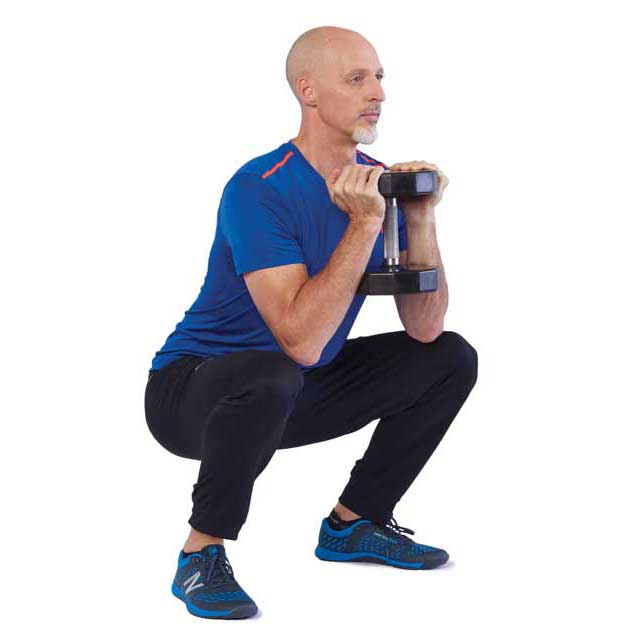
• Hold a dumbbell vertically just under your chin, palms against the inside of the dumbbell’s top plate.
• Perform the movement as described for the barbell back squat. Your elbows will likely touch the insides of your thighs in the down position.
Ideal For: Teaching proper squat form and improving range of motion.
Kettlebell Front Squat
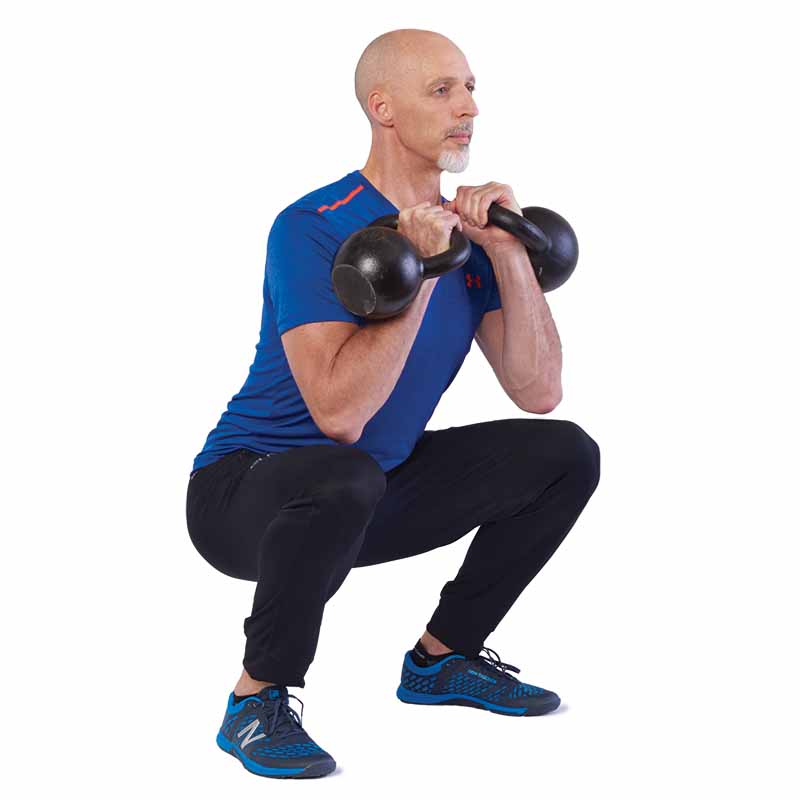
• Assume the front rack position with two kettlebells resting against your forearms at shoulder height.
• Perform the movement as described for the barbell back squat.
Ideal For: Improving hip and ankle flexibility and core stability.
Zercher Squat
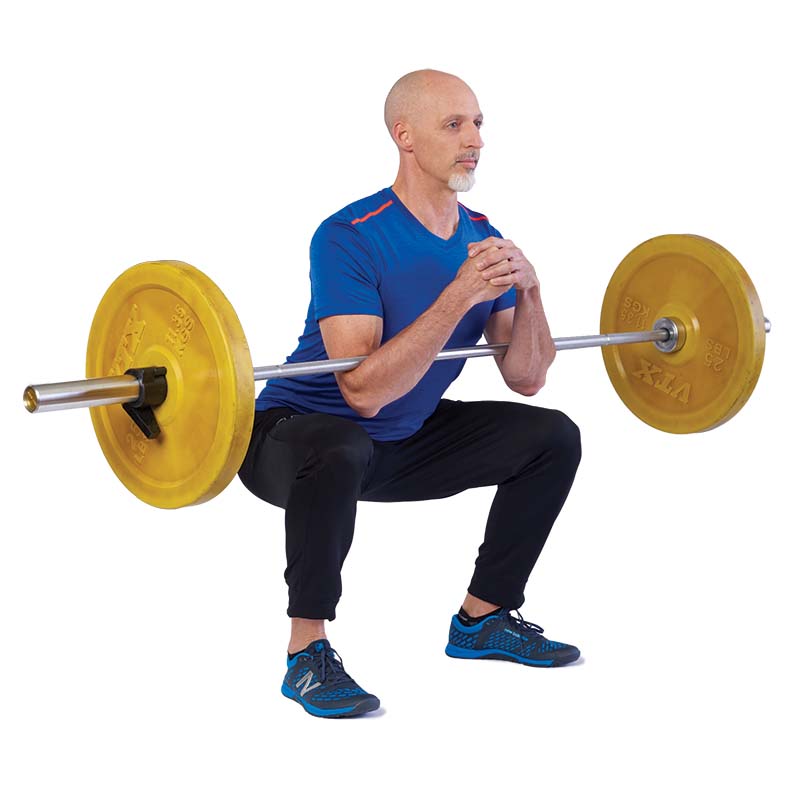
• Place a loaded barbell in a squat rack at elbow height and stand facing it.
• Wrap your arms under the bar so it rests in the crooks of your elbows, and lift the bar off the rack.
• Walk back a few steps and perform the movement as described for the barbell back squat.
Ideal For: Providing an additional upper-body and core challenge
Cossack Squat

• Assume a wide stance with toes pointed out slightly.
• Slowly bend your left leg and shift your weight while keeping your right leg straight.
• Lower yourself with your torso upright and your left heel firmly planted.
• Rise and repeat on the opposite side.
Ideal For: Building coordination, balance, and hip mobility.
Watch the Squat Variations
The Bench Press
There’s a reason the question “How much do you bench?” is such a cliché among gym-goers the world over. “It’s a good indicator of pure upper-body strength,” says Glass. “If you’re trying to build muscle in your chest, you need to press. If you’re trying to tone up, you need to press. Athletes need to press. Grandmothers need to press.”
The press is an effective upper-body muscle builder — with particular emphasis on the chest, shoulder, and triceps muscles.
Pressing in any direction — forward, upward, downward, and everything in between — is a key motion in many recreational activities: Think of holding a downward-dog pose in yoga, or throwing a punch in the martial arts. It’s also an important part of many common movements, like getting up off the floor or hoisting a suitcase into an overhead bin.
When performed correctly, presses promote not just muscle strength, but also improved joint stability and mobility.
Barbell Bench Press
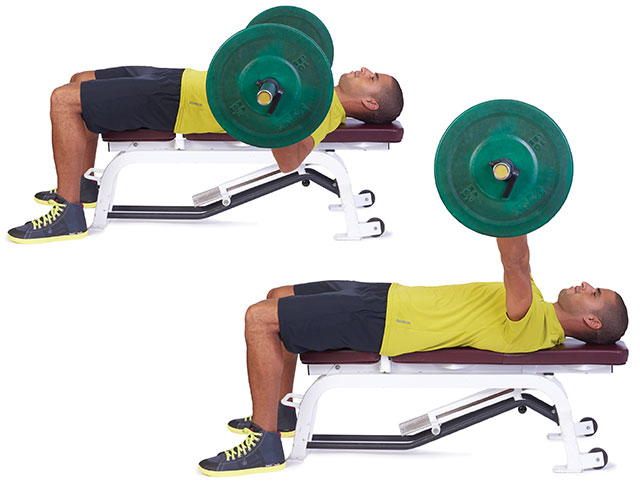
- Place a barbell in the uprights of a bench-press station and load it with an appropriate weight for you (or, if you’re a beginner, use the empty bar).
- Lie on the bench with the bar in line with the top of your head.
- Keeping your feet flat on the floor, take an overhand grip on the bar, with hands about 6 inches wider than shoulder width on each side. Lift the bar off the uprights.
- Slowly lower the bar until it contacts the lower part of your chest.
- Press the bar back to the starting position, pause, and repeat.
- Return the bar to the rack. If racking and unracking the bar is challenging or uncomfortable, which is common with heavier weights, ask a workout buddy or spotter to help you move the bar into position. (To fine-tune your form, see “BREAK IT DOWN: The Bench Press“.)
Try These Bench Press Variations
Incline Bench Press
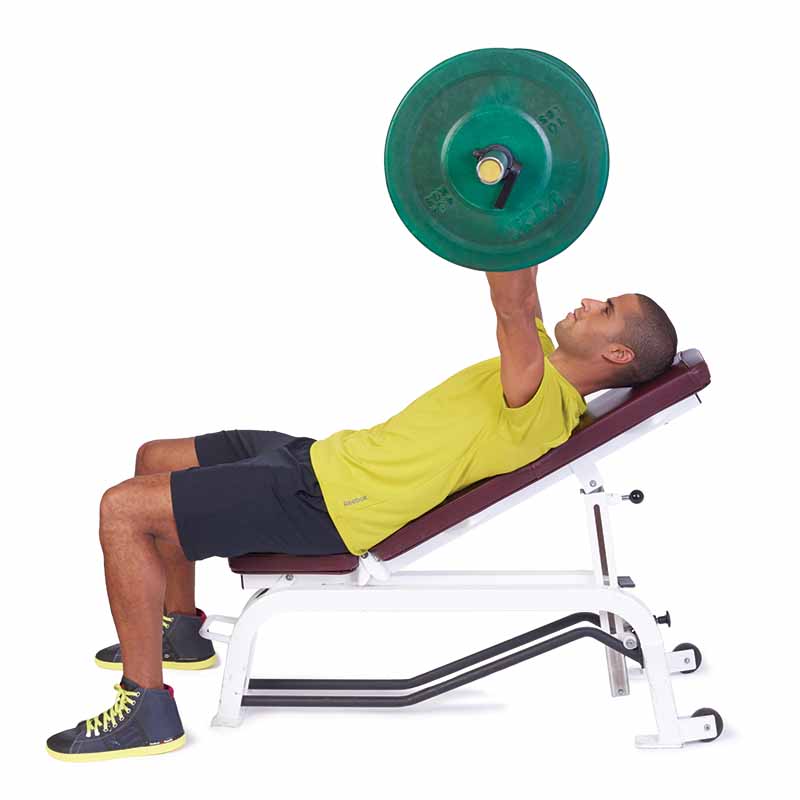
• Lie on a bench set at a shallow incline (30 degrees or less).
• Perform the exercise as described for the barbell bench press.
Ideal For: Focusing on the inner and upper portions of chest muscles; some exercisers may find the movement easier on the shoulders than the flat-bench version.
One-Arm Floor Press

• Lie on your left side with a dumbbell next to you. Grip the dumbbell with both hands, and roll onto your back.
• Release with the right hand and, keeping your left elbow near your torso, position your left arm so your forearm is perpendicular to the floor.
• Press the dumbbell over your chest, then gently lower the weight until your tricep touches the floor.
• Switch sides.
Ideal For: Those who have shoulder pain when they perform the standard bench press.
Rotating Press
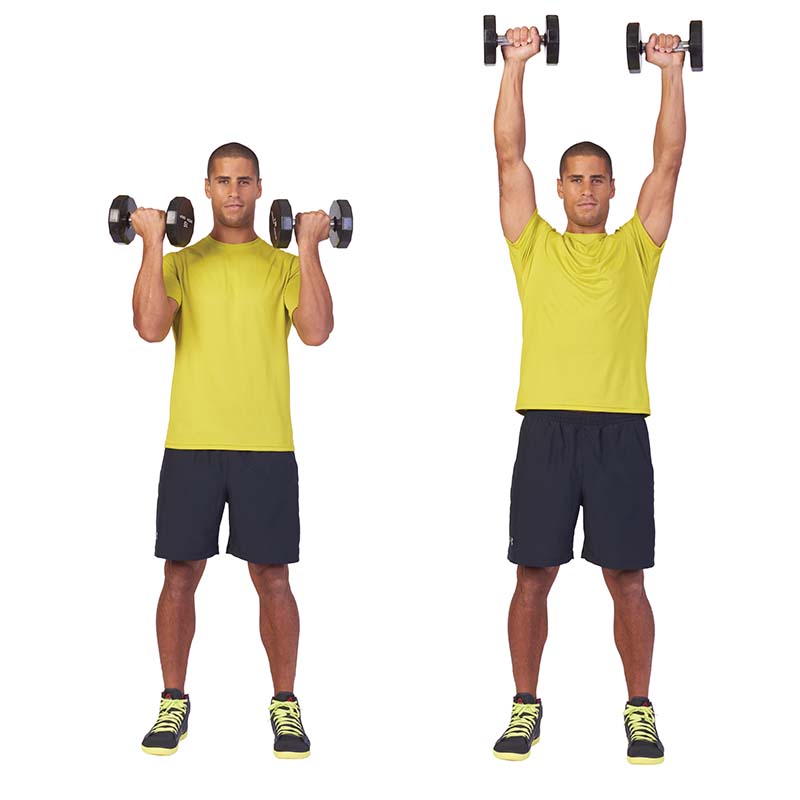
• Standing with feet hip width apart, hold two dumbbells at shoulder height, palms facing you.
• Press the dumbbells overhead, simultaneously rotating your wrists so that your palms face away from you at the top of the movement.
• Reverse the movement and repeat.
Ideal For: Building strength in the fronts of the shoulders.
Bottom-Up Press

• Hold a kettlebell in your right hand at shoulder height, with the flat bottom side of the kettlebell facing up. Make sure the handle of the kettlebell is in the heel of your hand, your wrist is straight, and your forearm is vertical.
• Keeping your lats and core engaged, press the kettlebell overhead — bottom facing up the entire time — until your arm is locked out.
• Lower the weight and repeat on both sides.
Ideal For: Building strength, balance, and shoulder stability.
Watch the Press Variations
The Deadlift
Deadlifts help us build the muscle necessary to heft groceries, children, and luggage with ease. “Deads” also aid us in counteracting some of the long-term effects of aging. “As you get older, your joints become stiffer and more fibrotic,” says Nuckols. That can lead to joint stiffness and back pain. Deadlifts keep those same joints mobile and primed for action, regardless of your age.
Deadlifts are the pull that mirrors the push of the bench press. By working your calves, hamstrings, glutes, and lower back, the move strengthens your entire “rear kinetic chain,” Glass explains, all of which tends to weaken in people who spend lots of time sitting.
And deadlifts only look dangerous, he says. “People hurt their backs picking stuff up because they never practice doing it. Learn good form on the deadlift and you’re less likely to get hurt — in or out of the gym.”
Conventional Deadlift

- Load a barbell with an appropriate weight for you; step up to the bar so it is touching your lower legs at mid-shin height.
- Hinge at the hips and bend your knees, reaching down to take an overhand, shoulder-width grip on the bar.
- Keeping your arms straight, your lower back in its natural arch, your chest up, and your head aligned with your spine, stand fully upright by pushing your hips forward. Squeeze your glutes at the top to achieve a full lockout.
- Keeping your lower back in its natural arch, hinge at the hips and bend the knees to lower the bar to the floor. (For additional form tips, see “BREAK IT DOWN: The Deadlift“.)
Try These Deadlift Variations
Sumo Deadlift

⋅ Perform the movement as described, but with your feet wider than hip width and your arms hanging down between your knees.
Ideal For: Taller lifters, who may have trouble keeping their backs flat with the conventional lift.
Suitcase Deadlift
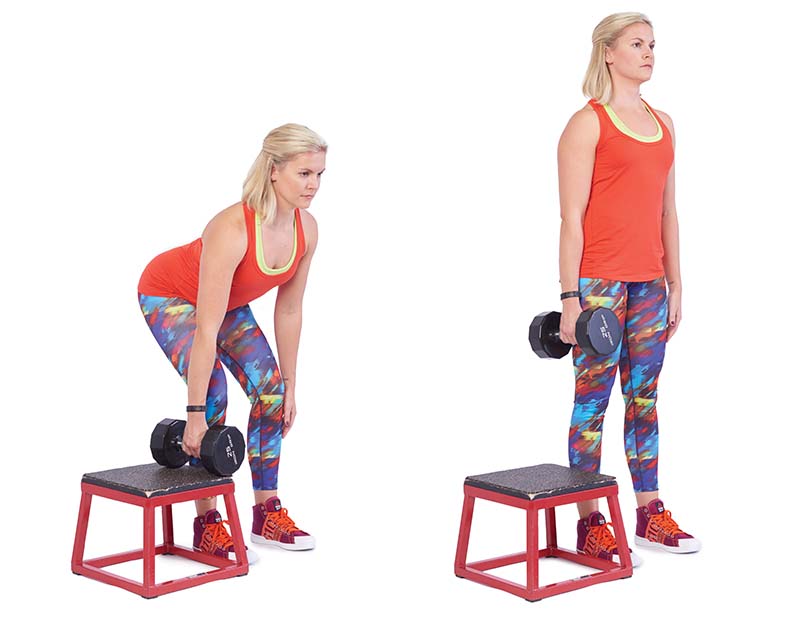
• Perform the movement with a dumbbell or kettlebell held at your side.
• If you find it difficult to lower the weight to the floor without bending or twisting, perform the move with the weight elevated on a low box or step.
Ideal For: Building core strength and hip mobility.
Rotational Deadlift

• Place a kettlebell on a small box to the outside of your right foot.
• Bend your knees and hinge at the hips, rotate to your right, and grab the handle of the kettlebell.
• Keeping your lower back flat, stand and face forward.
• Rotate to lower the weight. Repeat on both sides.
Ideal For: Activating the sacroiliac joint deep inside the pelvis, which improves coordination and mastery of transverse-plane (rotational) movements.
Seated Deadlift
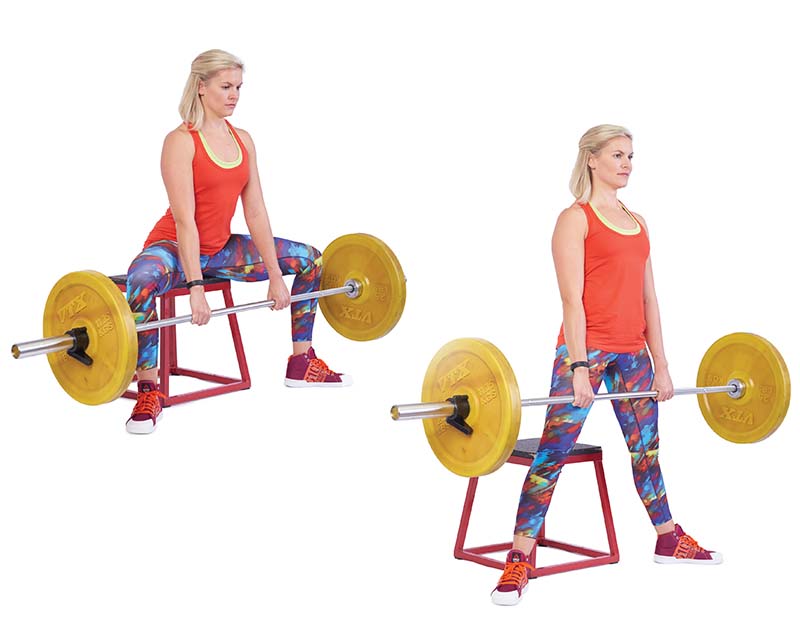
• Sit in a chair, knees wide, with a loaded barbell on the floor near your shins.
• Hinge forward at the hips and grab the barbell with an overhand grip, elbows inside your knees.
• Hinge back until you are sitting tall in the chair, then push through your heels to stand.
• Reverse the movement, first sitting down in the chair and then lowering the bar to the floor.
Ideal For: Improving hip mobility and teaching proper deadlift form.
Also Try…
Single-Leg Deadlift
- Stand upright, holding a heavy dumbbell in your left hand.
- Shift your weight onto your right foot and lift your left foot slightly off the floor.
- Keeping your lower back in its natural arch, your hips and shoulders square to the floor, and the dumbbell in your left hand close to your right leg, slowly hinge forward on your right hip, bending your right knee slightly and lifting your left leg directly behind you until the dumbbell is close to the floor.
- Pause, reverse the movement, and repeat. (For additional form tips, see “BREAK IT DOWN: The Single-Leg Deadlift“.)
Ideal For: Improving balance and flexibility while evening out strength and mobility differences between your left and right sides.
Hex Bar Deadlift
- Load a hex bar — a six-sided apparatus that allows you to initiate the movement with the bar closer to your center of gravity — with a weight that is appropriate for you. Bend at the knees and hips joints to grip the handles.
- Keeping your arms straight, your lower back in its natural arch, your chest up, and your head in alignment with your spine, slowly stand fully upright.
- Keeping your lower back in its natural arch, bend at the hips and knees, lowering the bar to the floor, and repeat.
Ideal For: Beginners, since it’s easier to learn and safer to perform.
How Much Weight Should I Lift?
Determining how much to lift can be a challenge in itself. As a general rule of thumb, choose weights that are challenging for you to lift with good form for all of the reps in a set.
Finding the ideal resistance level takes some trial and error when an exercise is brand new to you, says veteran trainer Nick Tumminello, author of Strength Training for Fat Loss.
“Be conservative,” he advises. “For the first week on any new program, choose weights you can handle easily.”
After you feel confident with that starting weight, slowly and steadily add to it. For example, if your squat program calls for three sets of five reps, and you easily completed that with 95 pounds last week, add 5 to 10 pounds to the bar this week.
If you struggled to complete those sets, stick with 95 pounds until you can handle five reps for all three sets.
Follow these guidelines for choosing weights that match your workout goals:
- Light weights are loads you can lift 15 or more times; they help you build endurance.
- Medium weights are loads you can lift eight to 12 times; they help you build a combination of muscle size and strength.
- Heavy weights are loads you can lift fewer than eight times with good form; they help you build strength.
And remember: Listening to your body is the key to steady and safe progress in the weight room. (For more guidance, see “Expert Answers on Figuring Out How Much Weight to Lift“.)
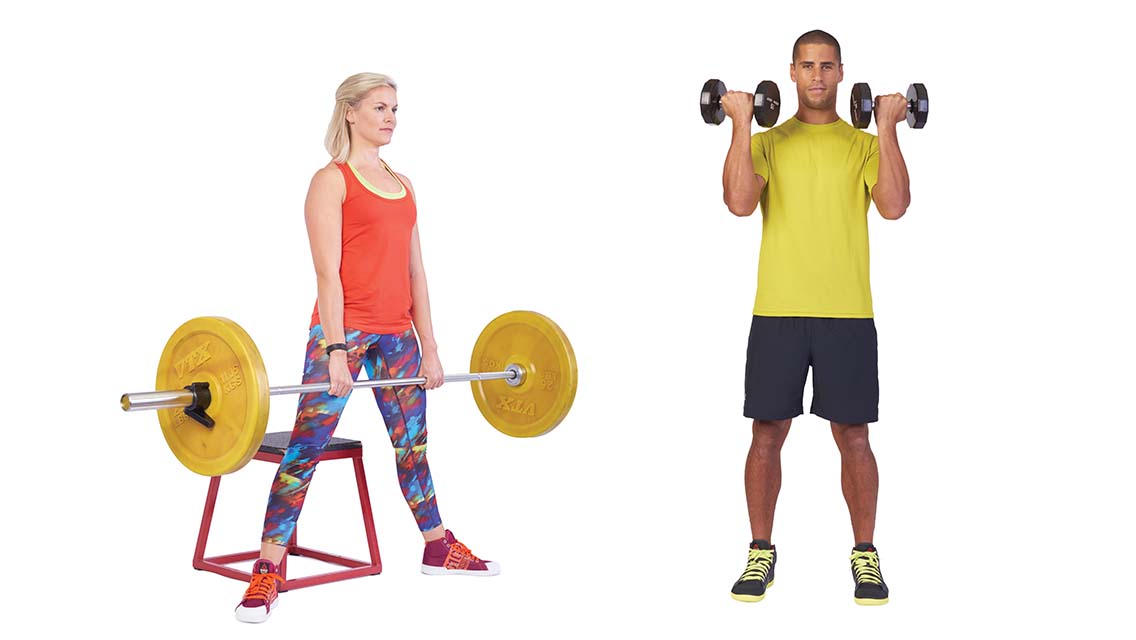
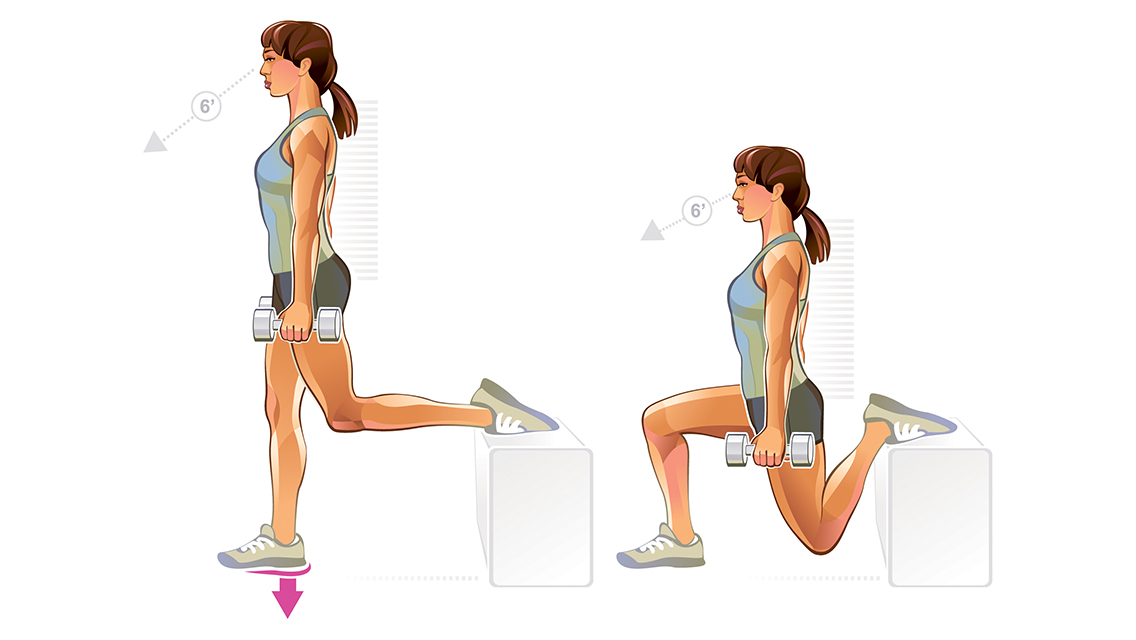
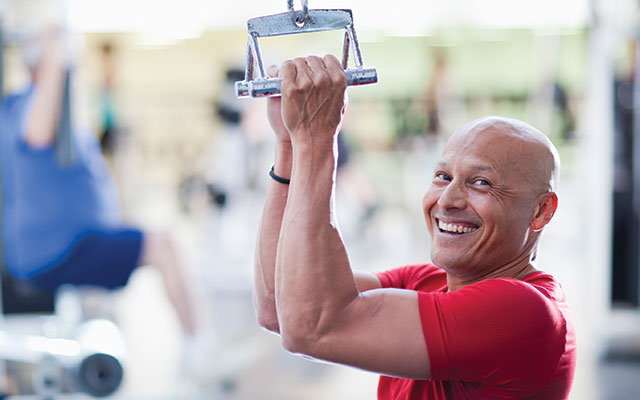
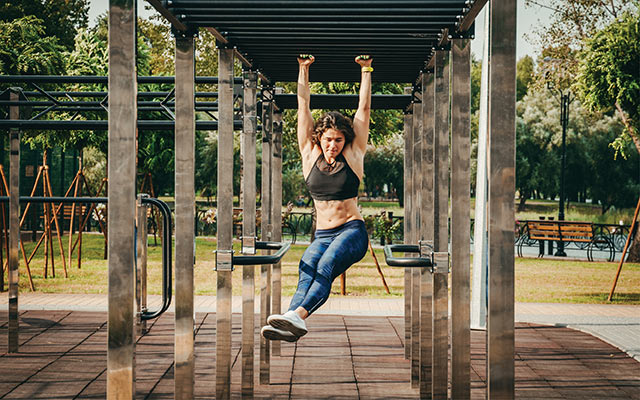
This Post Has 0 Comments